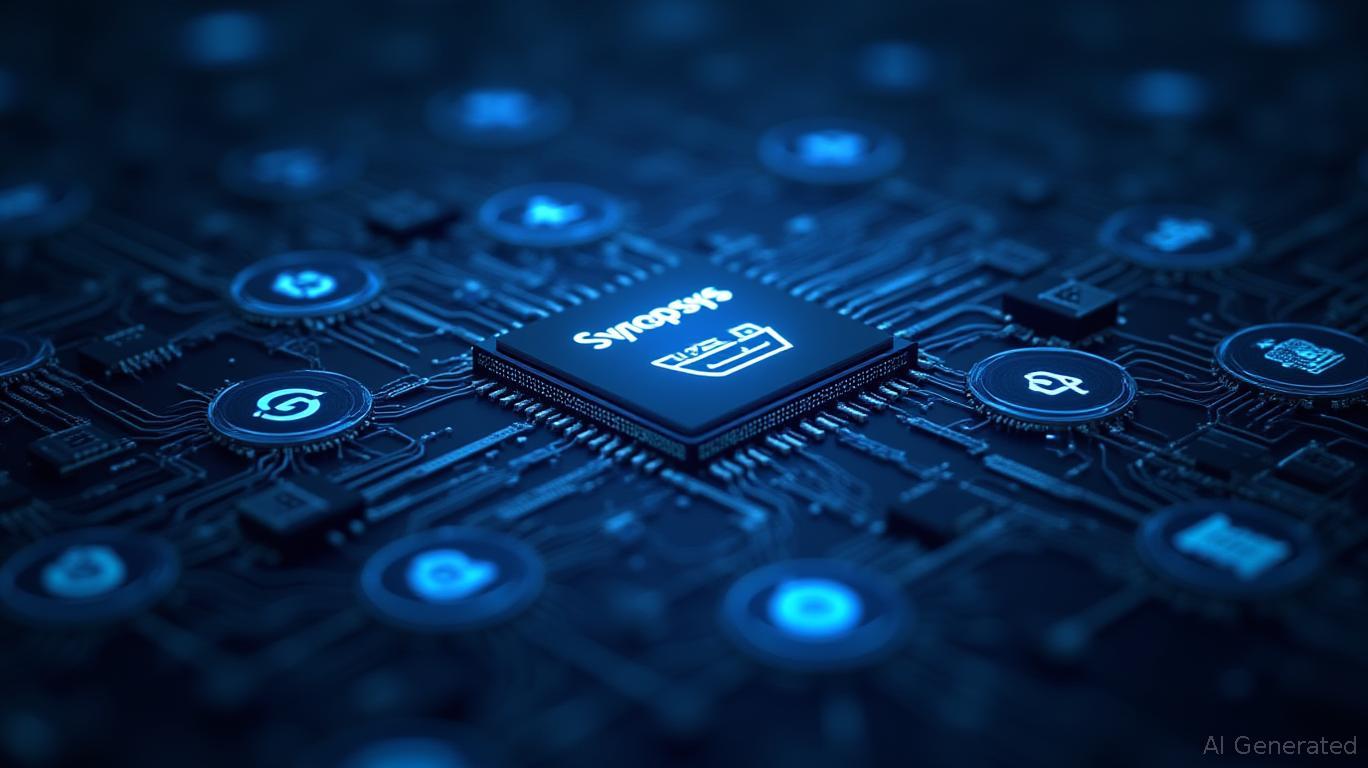PCIe 6.x Breakthrough Positions Synopsys and Broadcom to Lead AI Infrastructure Growth
The race to dominate AI infrastructure is intensifying, and two semiconductor giants—Synopsys (SNPS) and Broadcom (AVGO)—are cementing their positions through a landmark achievement: the first interoperability demonstration of PCIe 6.x technology at 64 GT/s. This milestone, announced at PCI-SIG DevCon 2025, underscores their strategic ecosystem dominance and positions them to capitalize on the explosive growth of AI hardware. Here's why investors should pay attention.

Strategic Ecosystem Dominance: Why PCIe 6.x Matters
PCIe 6.x, operating at double the data rate of its predecessor, is the backbone of next-gen AI data centers. It enables ultra-fast data transfer between processors, accelerators, and memory systems—a critical requirement for training large language models and other compute-heavy workloads. Synopsys and Broadcom's interoperability test proves their solutions can seamlessly work together at this speed, reducing fragmentation risks and accelerating deployment timelines for hyperscalers and cloud providers.
Synopsys' leadership in PCIe IP is unmatched: over 3,800 customer tapeouts across seven generations, including 100+ PCIe 6.x implementations, ensure its designs are silicon-proven and ready for mass adoption. Broadcom's PEX90000 series switch, meanwhile, serves as a cornerstone for scalable AI systems, supporting hyperscalers' demands for high-bandwidth, low-latency connectivity. Together, they're creating a unified ecosystem that lowers technical risks for customers—a key competitive advantage in an industry where design flaws can delay projects by months.
Reducing Design Risks and Accelerating Time-to-Market
The stakes are high: AI workloads require parallelism at scale, and data center operators can't afford interoperability failures. Synopsys' complete PCIe 6.x solution—spanning PHYs, controllers, and security IP—mitigates risks by ensuring compatibility across the ecosystem. Broadcom's PCIe Gen 6 portfolio, including its first 2nm AI XPU and 3.5D packaging, delivers the performance needed to handle trillion-parameter models.
The collaboration's real-world impact is clear: AI server deployments using PCIe 6.x are now entering production, with hyperscalers like Meta and Alphabet adopting these technologies. As one analyst noted, “This interoperability is pivotal—it's not just about speed but about ensuring that AI systems can scale without bottlenecks.”
Navigating Tariff Headwinds: Resilience Through Diversification
Geopolitical tensions remain a concern. U.S.-China tariffs and export controls on advanced semiconductors threaten supply chains. Broadcom, with 20% revenue exposure to China, faces risks from retaliatory tariffs (up to 125% on U.S. goods), but its strategy to diversify manufacturing—e.g., shifting 60% of AI server production to Mexico—buffers against disruptions. Synopsys, though less directly impacted, benefits from its software-centric model, which is less vulnerable to hardware tariffs.
Both companies are also investing in compliance and partnerships to navigate export restrictions. Broadcom's early access program for PCIe Gen 6 customers and Synopsys' collaboration with VMware (acquired by Broadcom) to develop AI-friendly infrastructure software further reinforce their resilience.
Long-Term Upside: The AI Infrastructure Boom
The AI hardware market is booming. By 2027, AI semiconductors alone could exceed $50 billion, driven by hyperscalers' insatiable demand for compute power. Synopsys' role in enabling AI chip design tools and Broadcom's dominance in AI accelerators and networking gear position them to capture a significant share of this growth.
Broadcom's Q1 2025 results—$14.9 billion in revenue, with AI semiconductors up 11% YoY—highlight its momentum. Synopsys' Q2 2025 revenue rose 10.2% YoY to $1.6 billion, fueled by AI-driven design demand. Both companies are expanding their AI portfolios: Broadcom aims to scale XPU clusters to 1 million units by 2027, while Synopsys continues to bolster its IP library for advanced nodes like 2nm.
Investment Takeaway: Buy the Ecosystem Play
For investors, Synopsys and Broadcom represent a “buy the dip” opportunity. Despite near-term tariff volatility, their collaboration on PCIe 6.x and broader AI strategies are strategic wins. Synopsys' software moat and Broadcom's hardware scale create a formidable duo in an AI-first world.
Historical backtests affirm this strategy's viability: when their quarterly revenue beat estimates by ≥5%, a 90-day hold since 2020 delivered an 11.46% compound annual growth rate with a 6.46% excess return, despite a maximum drawdown of 12.5%. This underscores their resilience in volatile markets and validates a disciplined, earnings-driven approach.
- Synopsys: A core holding for semiconductor investors. Its recurring revenue model and AI IP leadership justify its premium valuation.
- Broadcom: A leveraged play on AI infrastructure. Its dividend yield (~1.5%) and buybacks provide downside protection while benefiting from AI's long tail.
Final Note: The PCIe 6.x milestone is more than a technical feat—it's a strategic move to solidify Synopsys and Broadcom's roles as architects of AI infrastructure. With AI's growth trajectory intact, these companies are well-positioned to deliver outsized returns for investors willing to navigate near-term trade headwinds.
Sign up for free to continue reading
By continuing, I agree to the
Market Data Terms of Service and Privacy Statement

Comments
No comments yet